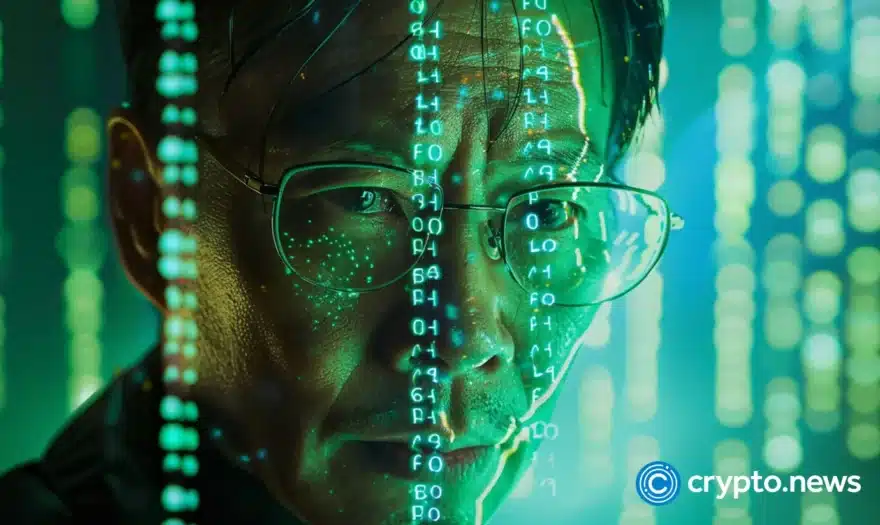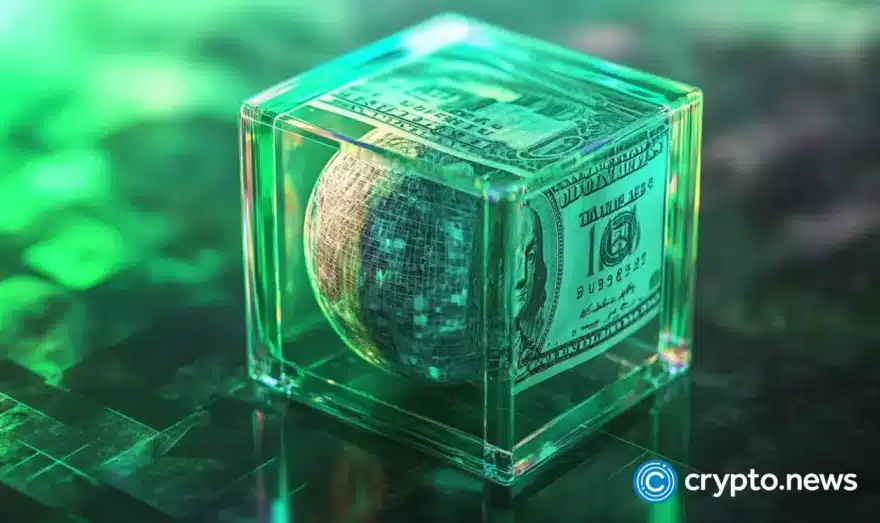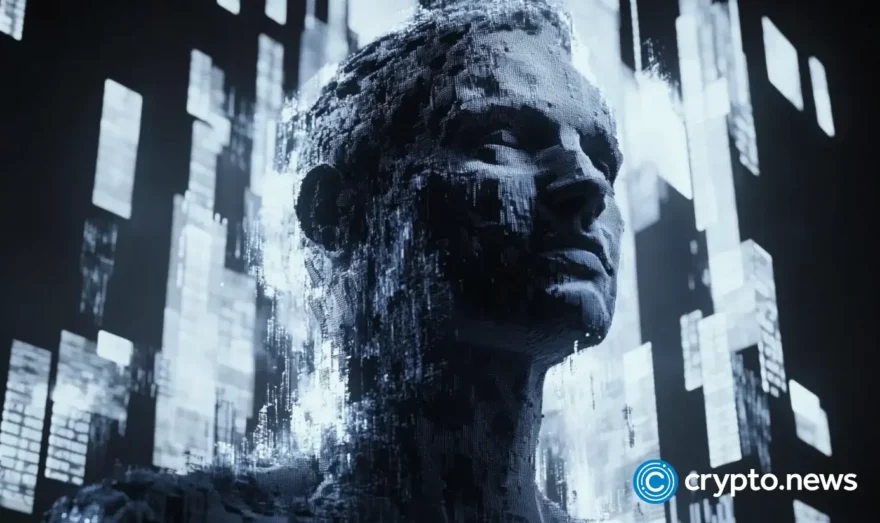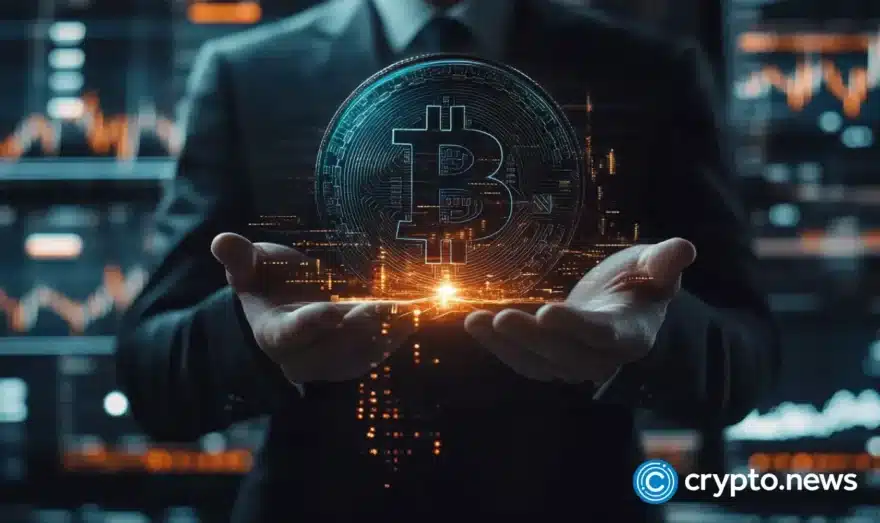Who Is or Was Satoshi Nakamoto?

It is not known who Satoshi Nakamoto was or is. Also, no one has proof of whether Satoshi is a male or female person as the name is a pseudo. However, the crypto space refers to Satoshi Nakamoto as a man since his P2P foundation profile claimed he was. It is also unknown if Satoshi Nakamoto is a pseudo name for an individual or a group. Currently, his nationality or whereabouts are also unknown.
However, some details about him are known. Here is some of the critical information about Satoshi Nakamoto.
The global economic recession of 2007 drove Satoshi Nakamoto to invent a monetary system beyond centralized entities’ control. He began writing the first codes for the Bitcoin project using C++ in May 2007. In August 2008, Satoshi was almost through with his work, and he emailed two cypherpunks, Wei Dai and Hal Finney, enquiring for feedback on his initial BTC whitepaper. The two individuals checked the job and gave positive feedback.
In October, Satoshi published the Bitcoin white paper through a public cryptography mailing list. The response to his mailing was muted. However, some people were intrigued by the ingenuity of the upcoming project. In January 2009, he officially launched Bitcoin with an open-source codebase.
The project did not attract much attention at the time. Eager and respected coders like Hal Finney inspected the program and provided their technical analysis. Mostly, Satoshi was the only active BTC miner. He continued perfecting his project until it gained a community of followers. However, he did not bother to unmask his identity. Below is some information on who he could be.
What Is Nakamoto’s Nationality?
Though some have interacted with Satoshi Nakamoto virtually, no one has ever met him in person to explain who he really is. All attributes drawn on him and his ideologies are based on the virtual communications between him and other developers.
Satoshi Vanished in 2010, about a year after the successful launch of Bitcoin. Shortly before leaving his Nakamoto identity behind, he handed the reins to Gavin Andresen.
In what is believed to be his last message, Nakamoto said that he had “moved on to other things” and that Bitcoin was “in good hands with Gavin [Andresen] and everyone.”
While conversing with other developers, Satoshi Nakamoto claimed to have Japanese origins. Records further state that he was born on April 5, 1975. However, he never provided any tangible evidence to support his claims. He did not even confirm his gender status.
Lazlo Hanyescz Explains His Encounters With Satoshi Nakamoto
Some of the earliest BTC developers, like Lazlo Hanyecz, who exchanged hundreds of emails with Satoshi, have explained further about him. Lazlo, colloquially known as the Bitcoin Pizza Guy, claims that Satoshi made him get a weird feeling. Below is how he explains Satoshi as:
- Mysterious Individual
Lazlo explained that Satoshi always dodged personal questions to keep his identity hidden. He worked closely with Satoshi on the Bitcoin project and is well known for being among the first people to use the Bitcoin network. In 2010, he even purchased two Pizzas for 10K BTC.
In an interview with Business Insider, Lazlo spoke of Satoshi as a mysterious individual who always had a weird way of life. He claimed that it would take days and even weeks for Satoshi to reply to his emails only to address them all in a single Friday. He said that Satoshi tended to send him tasks to complete as if he was a full-time employee against his volunteer status.
He explained:
“Nakamoto would send me emails like, ‘Hey, can you fix this bug? Hey, can you do this?’ He’d say: ‘Hey, the west side’s down.’ Or, ‘We have these bugs; we need to fix this.’ I’d be like, ‘We? We’re not a team. I’d say, ‘Hey, you’re not my boss.’ I didn’t take it too seriously, though.”
Lazlo explained that he did not feel like the project mattered the most to Satoshi as his tendencies pointed out that he could be working on other projects.
- Secretive Tendencies
According to Lazlo, Satoshi maintained a secretive identity throughout their exploits. He was never willing to give away information regarding his personal life. Satoshi went to be very hard to relate to any belief, opinion, identity, ideology, or such attributes. However, his eccentric and slightly neurotic Asian characteristics stuck throughout their exploits.
Even though Satoshi kept pushing Lazlo to take Bitcoin cautiously, Lazlo brushed it off since the project was only a hobby to him. He also wanted to help the inventor realize his dream of launching BTC.
Describing his encounter with Satoshi, Lazlo said:
“There were a few times when I got messages that seemed off-base. I brushed them off because ‘Who cares if this guy tells me to go pound sand and go away?’ This wasn’t my job or anything; it was a hobby. I was trying to be friends with him. He seemed very paranoid about people breaking the software. He kept calling it ‘pre-release,’ and I was helping him get it to release.”
Lazlo explained that despite Satoshi’s eccentricity, he was right to be paranoid about what would become of the project. Satoshi took many secretive measures that shaped Bitcoin into what it is today. He conceded that were it not for Satoshi’s caution, the network would have ended up very differently.
Nakamoto’s Association With Other Developers
Satoshi Nakamoto showed that he believed in communism as he involved other developers in the development of the Bitcoin network. Away from working with Lazlo Hanyescz, he also requested services from known programmers like Hal Finney and Wei Dai.
He also entrusted the network to Gavin Andresen in April 2011 before distancing himself from it. His exploits with these developers left behind traces of information about him. This information mainly was through emails that some developers revealed later on.
Leaked Emails
Several emails from Satoshi have been leaked over time. One of his last emails was addressed to a developer named Mike Hearn. Satoshi answers whether he would be rejoining the Bitcoin community again in the email. He claimed that he had other things in mind, and the project was in good hands with Gavin Andresen and everyone.
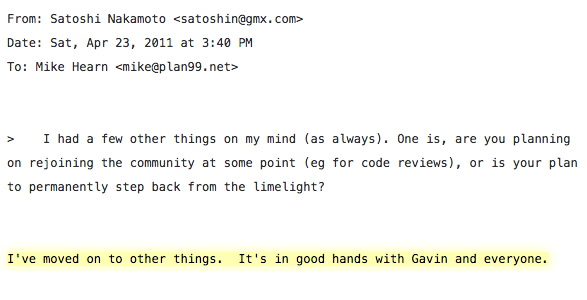
Till now, no one has ever heard from Satoshi again.
His Inspirations
Commonly, everyone has motivations when coming up with something or carrying out special activities. While it is known that his primary motivation was to begin an age of decentralization, the Bitcoin whitepaper details other sources of his inspiration. It says that he was inspired by:
- Ralph Merkle’s work on Merkle trees
- Haber and Stornetta’s work on cryptographic timestamping services
- Hashcash by Adam Back
- b-money by Wei Dai (this reference was added to a later version of the white paper, with the encouragement of Adam Back)
This information shows that Satoshi was a person who always kept in touch with his predecessors, which is where he built his work. The project is a remix of different ideas from works of cryptography in a never seen way.
He was mainly driven by applying the proof-of-work mechanism to develop a new consensus protocol that would also feature in future projects. Now, that consensus is known as the Nakamoto Consensus.
What Did Nakamoto Say About the Bitcoin Project?
Throughout his time at the wheel of the management of Bitcoin, Satoshi Nakamoto addressed different issues and acted as the network’s first ambassador. His brilliance shined in his exploits, and the source code did all the talking for him. As he always claimed, he was better at communicating through his code rather than words.
During the period of Bitcoin’s value proposition, he wrote:
” It’s very attractive to the libertarian viewpoint if we can explain it properly. I’m better with code than with words, though.”
At least, Satoshi’s motivation to develop the Bitcoin project was partially ideological. When he was announcing the project’s white paper, he said:
“The root problem with conventional currency is all the trust required to make it work. The central bank must be trusted not to debase the currency, but the history of fiat currencies is full of breaches of that trust. Banks must be trusted to hold our money and transfer it electronically, but they lend it in waves of credit bubbles with barely a fraction in reserve. We have to trust them with our privacy, trust them not to let identity thieves drain our accounts. Their massive overhead costs make micropayments impossible.”
Later on, he added:
“Yes, [we will not find a solution to political problems in cryptography,] but we can win a major battle in the arms race and gain a new territory of freedom for several years. Governments are good at cutting off the heads of a centrally controlled networks like Napster, but pure P2P networks like Gnutella and Tor seem to be holding their own.”
Satoshi acknowledged his project as a descendant of the P2P file-sharing protocols. Additionally, he seemed reserved at taking credit for creating a financial tool that could change the world forever. Either he wanted to stay out of the limelight or found more grace in crediting others.
In the original explanation about Bitcoin on Wikipedia, Satoshi wrote:
“Bitcoin implements Wei Dai’s b-money proposal on Cypherpunks in 2008 and Nick Szabo’s BitGold proposal.”
Later in 2010, he stood up to WikiLeaks for accepting Bitcoin donations. While the move seemed like it would mainstream Bitcoin, Satoshi advised against it as the project was too young to face harsh criticism. He said:
“The project needs to grow gradually so the software can be strengthened along the way. I make this appeal to Wikileaks not to try to use bitcoin. Bitcoin is a small beta community in its infancy. You would not stand to get more than pocket change, and the heat you would bring would likely destroy us at this stage.”
His engagement with WikiLeaks showed what other developers explain him: a paranoid but calculative individual. One forum suggested that Bitcoin had a potential synergy with the eCash-esque project that was still a start-up at the time. It caught Satoshi’s attention, and he replied:
“They’re talking about the old Chaumian central mint stuff, but maybe only because that was the only thing available. Maybe they would be interested in going in a new direction. Many people automatically dismiss e-currency as a lost cause because of all the failed companies since the 1990s. I hope it’s obvious that only the centrally controlled nature of those systems doomed them. This is the first time we’re trying a decentralized, non-trust-based system.”
Satoshi’s Disappearance
Despite being polite, calm, and pragmatic, Satoshi maintained his secret identity through the launch and steering of Bitcoin to popularity. He did not even have any close relationship with all of the developers that worked with him. He continually avoided private conversations and limited his interactions to Bitcoin, a move that would be hard for any individual to sustain.
Maybe the pressure of living a double life weighed down on him, and he decided to leave behind his identity as Satoshi Nakamoto. It’s possible that he could also become a target due to challenging the world order of finance. Or he even found out that the steering of Bitcoin by one leader would go against what it campaigned for (decentralization).
With his reasons, he announced that he would be stepping out of the limelight and leaving the network at the hands of developer Gavin Andresen and everyone. He only explained that he had other things in his mind away from Bitcoin.
Ever since his departure, people became alert and started following clues about who he was. Some people were suspected to be Satoshi, while others publicly claimed to be him.
Did Satoshi live in Los Angeles?
In January 2009, as Satoshi and Hal Finney worked on the Bitcoin Alpha version, Hal encountered a major bug and posted the analysis on the mailing list. The log showed that only three people were using the network at the time, including Satoshi. However, it could have been other people as the network had already gone public.
Satoshi replied to Hal Finney, but his IP address was exposed publicly. It reflected that the device used to reply to Hal was located around Los Angeles. The exact data derived from the IP address was:
Van Nuys, Los Angeles, CA, was where the IP was.
> IP Address: 68.164.57.219
> IP Block: 68.164.57.128 – 68.164.57.255
> Reverse DNS: h-68-164-57-219.lsan.ca.dynamic.megapath.net
> Host: Covad Communications. Van Nuys, CA, USA
> Location: Van Nuys, CA, USA
While it is evident that an IP address does not always show exactly where the device is located, it became clear that Satoshi lived in America, which could have been why he chose to stay masked. Other innovators of projects like the e-gold and Liberty Reserve had been indicted by the US government already, a fate he could be avoiding.
Who Is Most Likely the Real Satoshi Nakamoto?
Ever since Satoshi Nakamoto stepped out of the limelight, many have wondered who the real face behind Bitcoin was. Below are some of the most probable candidates for Satoshi’s seat as the inventor of Bitcoin.
Nick Szabo
Nick Szabo is one of the earliest names to float around in connection with digital currencies. He is an American computer scientist and cryptographer believed to be the anonymous creator of Bitcoin. One of the major arguments supporting his connection to bitcoin is Bitgold.
Bitgold is a pre-Bitcoin digital currency project that has striking similarities to Bitcoin. In 2013, Skye Grey, an internet researcher, used a reverse textual analysis algorithm to seek proof that Szabo wrote the BTC whitepaper. He found many common phrases and expressions of ideas between Szabo’s work and the BTC paper. However, Szabo strongly denied the allegations.
Elon Musk also believes that Nick Szabo is most likely the best candidate to ‘suspect’ of coming up with the Bitcoin project. Talking about Bitcoin’s origins, he explained:
“Obviously I don’t know who created bitcoin … it seems as though Nick Szabo is probably more than anyone else responsible for the evolution of those ideas,” said Musk, adding, “he claims not to be Nakamoto … but he seems to be the one more responsible for the ideas behind it than anyone else.”
Hal Finney
Being among the first team of developers to work on Bitcoin, people believe that he may be Satoshi Nakamoto or have key information regarding him. He was a noted cryptographer and computer scientist with a background in PGP encryption which would be the necessary skills to develop such an invention.
However, he never claimed to be Satoshi Nakamoto. He even explained that while dealing with the real Satoshi, he felt like “he was dealing with a young man of Japanese ancestry who was very smart and sincere.”
Unfortunately, he was diagnosed with ALS in August 2009 and passed away on August 28, 2014.
Dorian Prentice Satoshi Nakamoto
Dorian Prentice Satoshi Nakamoto was first identified as Satoshi Nakamoto by a Newsweek journalist who claimed that his modest lifestyle came from being a brilliant developer. Dorian used to live in the Los Angeles San Gabriel foothills. Goodman interviewed Dorian, who gave a rather suspicious answer at first. Dorian said:
“I am no longer involved in that, and I cannot discuss it. It’s been turned over to other people. They are in charge of it now. I no longer have any connection.”
This statement stirred the internet with media houses making trips to his LA home, an occurrence that even led to a car chase in Dorian’s neighborhood. However, he declined to be involved with BTC in a later interview. He said that he misunderstood the question from Goodman and thought it was related to his previous work with the military.
Craig Wright
Craig Wright is an Australian computer scientist and developer who leads a modest lifestyle in the United States of America. Wright has been involved in court cases connected to the development of BTC and won the right to hold 1.1M BTC that was pre-mined when the network was going live.
Craig even came out to the media to say that he would give proof that he was Satoshi Nakamoto. However, he changed his mind days later and said that he wouldn’t give proof to unmask his identity as Satoshi. As a result, people began questioning his merit and branded him an impersonator.
He recently said he would dump his BTC as the project ended up exactly how he did not want. However, he stated that he fears crashing the market as his stash is worth billions.
Final Word
Although many want to know who is the face behind Bitcoin, it is still not clear if an actual reveal would even have any significant impact on the market. Since Satoshi left the limelight, the Bitcoin network has been led by developers who are determined to make it self-sustaining. It has already achieved stability, and it could be hard for a true Nakamoto to fit in.
The level of decentralization in the Bitcoin network is at its peak and does not require a central power overseeing it. Satoshi’s power as the network belongs to him could overwhelm it, so he should maintain his hidden identity. Nakamoto performs exemplary in his stand to let the network achieve its originally intended functionality of being ‘trustless.’
If he were to surface today, the attention of developers and investors could turn to his persona rather than the network that the community has been building for years. It should also be noted that people would take him too seriously, and almost each of his suggestions and announcements would pass without a real consensus.
The network has also gained billions in worth which could tempt any man to exploit it for their gain, given that they invented it. That would blur the line between his financial advice and personal opinions. As a result, Nakamoto would be in the wrong with every Bitcoin enthusiast as his further involvement would be a conflict of interest.
Though the Bitcoin community has faced tough decision-making times leading to major disputes like the hardfork that gave rise to Bitcoin Cash, it has more than survived. It is flourishing, and the future seems brighter for it. Many are bullish on it, and its adoption rates are at record highs. Perhaps the network is already at the level that Nakamoto envisioned, so he is not bothering to reveal himself.



